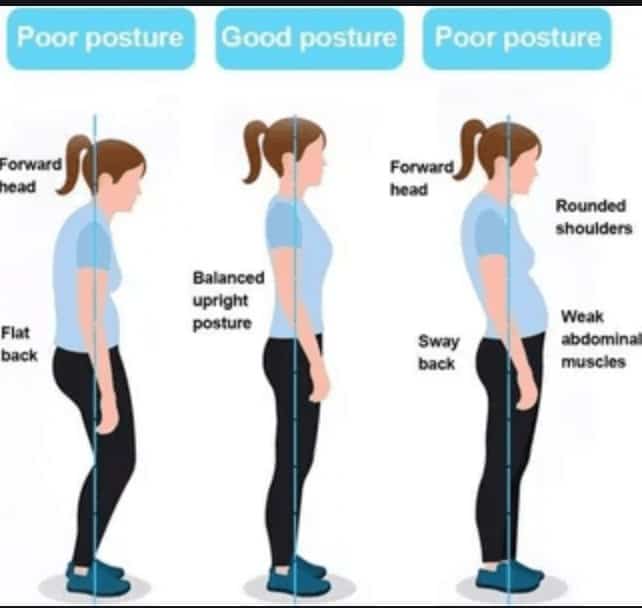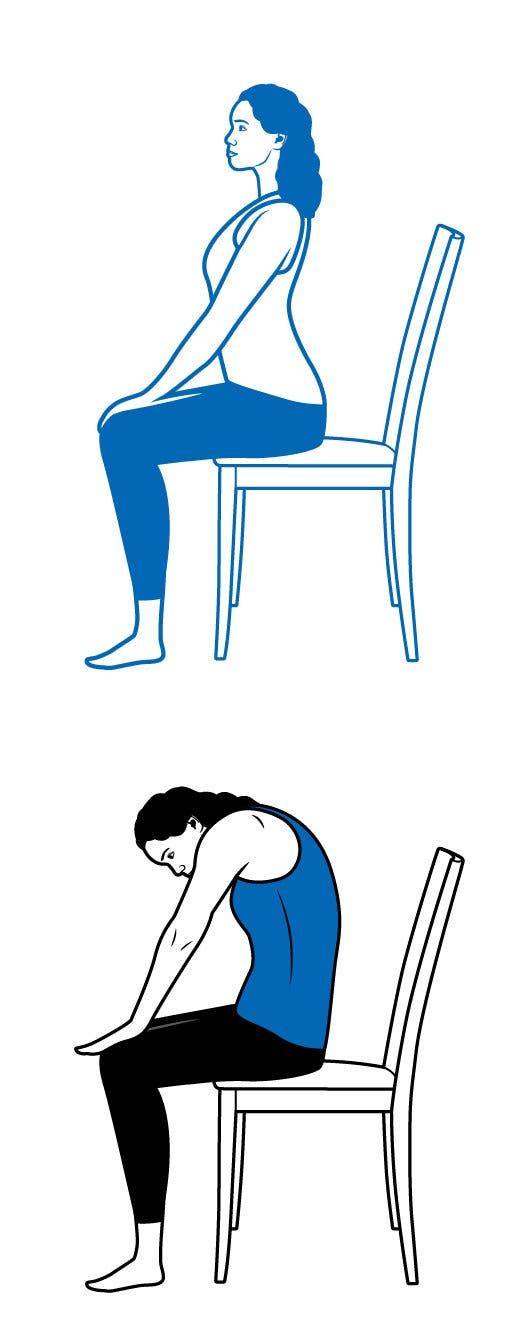How to treat a bruised toenail for dancers
Toenail Injuries in the Dancer by Dr. Sinkoe – Bruised Nail
Toenail problems become a source of concern and agony for the dancer, particularly the ballerina on pointe. Toenails function to improve our tactile (pressure) sensation and to act as a support structure for the toe. This can be helpful for the dancer on pointe. However, because there is a lot of pressure on the nail while on pointe, bruising of the nail can result.
The underlying nail bed is highly vascularized. The nail plate is adhered to the nail bed via small ligaments. Repetitive microtrauma to the nail plate can injure the ligaments resulting in shear stress to the nail bed. A small amount of bleeding occurs under the nail. As the bleeding continues, the nail plate can elevate, producing calloused tissue and making the nail appear thick. A portion of or the entire nail plate can be lost.
This cycle usually repeats itself over a period of time. Many ballerinas accept the fact that they have chronically bruised nails. Long term consequences of a chronically bruised nail can be chronic ingrown nail borders, a deformed nail or a fungal infection of the nail.
Causes of a bruised nail:
- Pointe shoes: “dead” platform and/or wide box can allow the toes to fall into the pointe shoe creating microtrauma to the nail
- Knuckling on pointe- will result in microtrauma to the nail plate
- Nails left too long will produce shear stress to the nail bed from micromovement of the nail plate
Treatment:
- When bruising is seen, apply an ice bag for 10 minutes three times daily.
- Apply tape such as Microfoam tape over the base of the nail in order to apply compression and keep the nail intact.
- Keep the nail clean with applying alcohol at least twice daily.
- Do not attempt self treatment to evacuate the area of bleeding as the problem can worsen.
In-Office Medical Treatment:
- Evacuate the blood under the nail, subungual hematoma, via a small needle through the nail plate.
 This usually does not require local anesthesia.
This usually does not require local anesthesia. - If a portion of the nail has been lost, the thick calloused tissue on the nail bed will need to be trimmed to allow healthy regrowth of the nail. Toenails grow at a rate of 1 mm/ month. This trimming may have to be performed periodically. Again, local anesthesia is not necessary.
Prevention:
- Do not allow nails to grow too long- cut at the free edge
- Evaluate pointe shoes and avoid dancing in “dead” shoes
- Access the cause of any toenail discomfort when first feeling the discomfort
BIO: Frank Sinkoe, DPM is a native of Atlanta, Georgia who has been practicing podiatry in Atlanta for 23 years. He has a general practice in podiatry and a subspeciality in dance medicine. Dr. Sinkoe serves as the podiatrist for the Atlanta Ballet and is a member of the International Association for Dance Medicine and Science (IADMS). He is married with two children. Reach him at 404-329-5050 or by e-mail at doctorfrank (at) bellsouth. net
net
Oh, Toenail Woes! Prevent and Treat Common Nail Injuries
Oh, Toenail Woes! Prevent and Treat Common Nail Injuries
Few problems are as painful and unsightly as a battered toenail. Sarah Chisholm, a dancer with Ballet Arizona, knows this well. She has suffered from chronic bruised and ingrown nails throughout much of her career. “It’s hard to focus on your work when you’re always worrying about how much your feet hurt,” she says. “You don’t get to think about the joy that comes from dancing.”
Dancers spend hours crammed into sweaty shoes, making them great candidates for ingrown nails, bruising and nail fungus. Though these aren’t usually threatening enough to force someone to take time off, they can cause days, weeks or even months of painful distraction. Many nail problems can be prevented by taking small precautions.
Bruised Toenails
A bruised nail might last several months, and the condition can be extremely painful. Often caused by stubbing the toe or knuckling over on pointe, the nail shifts over its bed where many blood vessels meet, causing bleeding under the nail.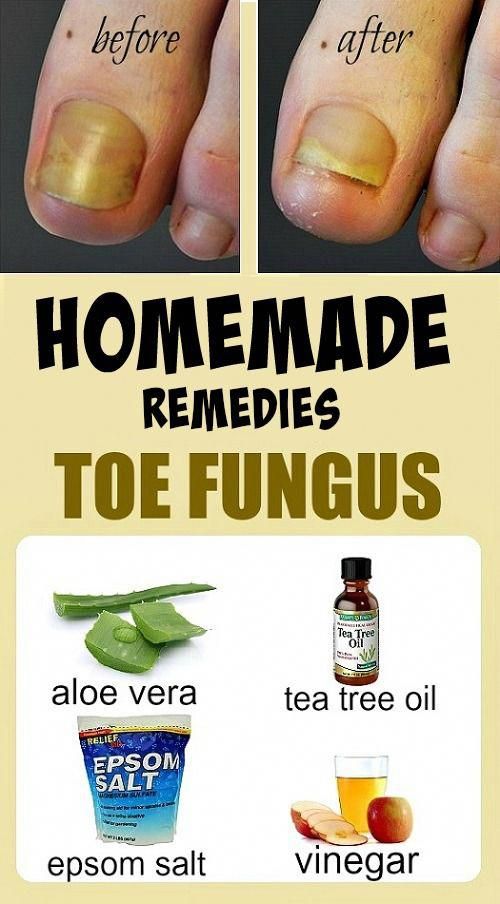 Long toenails and tight shoes or pointe shoe boxes that don’t match a dancer’s foot type can also put excessive pressure on the toes.
Long toenails and tight shoes or pointe shoe boxes that don’t match a dancer’s foot type can also put excessive pressure on the toes.
After bruising, ice the foot to soothe the pain. And regularly clean the area to prevent infection. “The dried blood under the nail bed is a breeding ground for bacteria,” says podiatrist Dr. Thomas Novella, who works with New York City dancers.
The nail may eventually loosen or fall off, but keep it intact as long as possible. “Band-Aid or tape it in place until a new nail begins to grow,” says Novella. Toenails grow just 1–2 millimeters per month, so it can take up to a year for a new one to fully form.
While growing a new nail, Chisholm applies 2nd Skin, a jelly-like adhesive that can be cut to size. “I stick it on my toenail, and it acts as a buffer,” she says. “It’s very cooling and helps with impact.”
Ingrown Toenails
Ingrown toenails are common in young dancers, whose nail plates have not yet strengthened, and those with nails that curve side to side.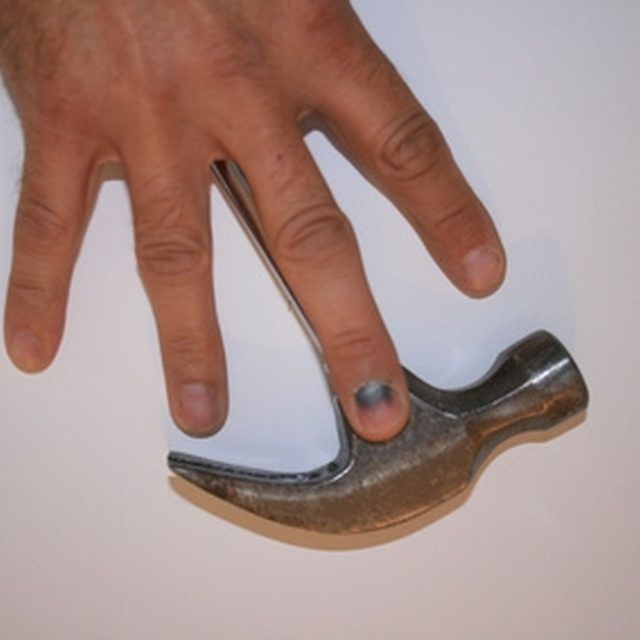 Chronic bruising can also damage nail beds enough so they grow back incorrectly, says Atlanta Ballet podiatrist Dr. Frank Sinkoe. “If it’s disrupted, it can cause an abnormality,” he says. Trim the nail to match the toe’s shape to help prevent ingrowns; be careful not to cut too far into the corners.
Chronic bruising can also damage nail beds enough so they grow back incorrectly, says Atlanta Ballet podiatrist Dr. Frank Sinkoe. “If it’s disrupted, it can cause an abnormality,” he says. Trim the nail to match the toe’s shape to help prevent ingrowns; be careful not to cut too far into the corners.
To soften the nail as it grows out, soak the foot in an Epsom salt and warm water bath. Resist the urge to pick; it could cause infection. If the pain is unbearable or there is swelling, redness and increased skin temperature, see a podiatrist. If it’s not infected, they can pack cotton deep under the nail. “This helps guide the skin away from the nail as it grows,” says Novella. In chronic cases, podiatrists can permanently remove the sides of the nail as a preventive measure.
Toenail Fungus
Fungal toenails are rarely painful, but they’re extremely unsightly and hard to treat. The nails are yellowed, thick and crumbly, and the surrounding skin is red and scaly.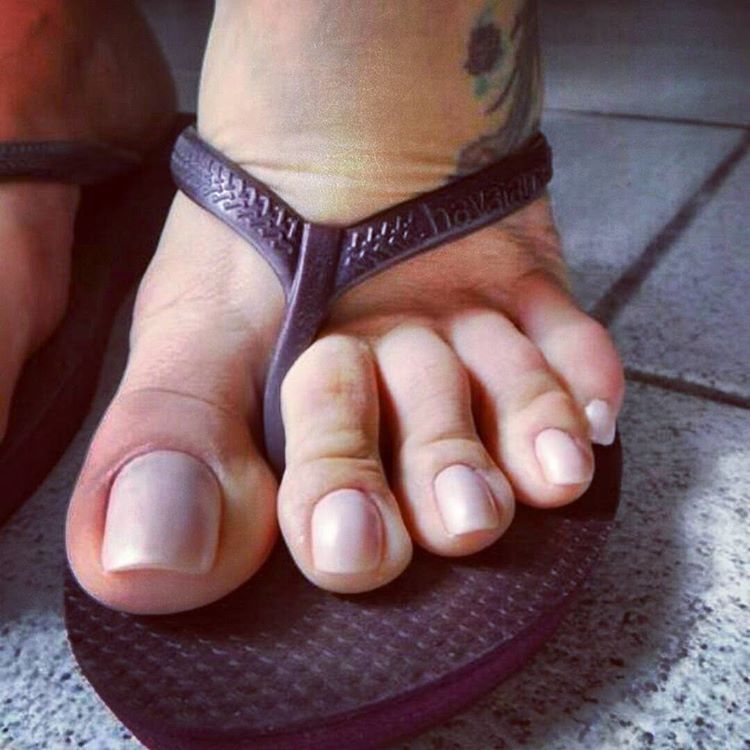 They often have a yeasty odor and powdery debris.
They often have a yeasty odor and powdery debris.
Novella says to seek help after noticing symptoms because “addressing fungus early will help a lot in the long run.” To diagnose the fungus, a podiatrist sends a snippet of the nail to a lab, and if confirmed, may suggest topical creams. Oral medications are most effective, but they can cause serious side effects like liver damage.
To prevent toenail fungus, change socks frequently and dry out dance shoes and toe pads. “Funghi is Italian for mushrooms. And where do mushrooms like to grow? Moist, dark places, like under logs—or inside sweaty shoes,” says Novella. He adds that the condition is contagious, so students should avoid sharing shoes, socks and nail clippers.
Bruised toenail and toenail: what to do, how to treat it
Bruised toenail or toenail is a painful injury accompanied by hematoma, blue nail plate. With a strong bruise, subsequently, detachment of the stratum corneum, impaired innervation and blood circulation is possible. Properly rendered first aid allows you to maintain the integrity of the nail plate or reduce the degree of damage.
Properly rendered first aid allows you to maintain the integrity of the nail plate or reduce the degree of damage.
Characteristic signs
The symptoms of a bruised nail plate on the hands and feet are somewhat different, and the intensity of the manifestations depends on the severity of the traumatic factor (impact force, subject of impact, area of damage).
Main symptoms
Hands and toes are most often subjected to various bruised wounds due to anatomical purpose, functional features. Common injuries to the nails on the hands are pinching a finger with a door, catching a long nail with some object. The following signs of nail injury are distinguished:
- severe swelling;
- numbness;
- severe soreness;
- hematoma.
Redness may or may not be present if the impact is directly on the surface of the nail plate. In severe cases, when there is crushing of the finger, severe bruising of soft tissues, gait disturbance, fainting, unbearable pain.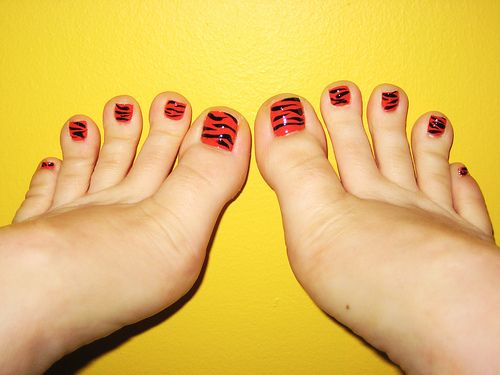 Some feel severe headaches with throbbing in the temporal region.
Some feel severe headaches with throbbing in the temporal region.
When a big toe nail is bruised, numbness almost always occurs, it becomes difficult to wear habitual shoes. With severe bruises, the nail usually exfoliates, departs completely or partially, depending on the area of traumatic injury. The nail peels off gradually, usually without causing serious pain.
At a mild stage of damage, serious disturbances in general well-being rarely occur, except for mild soreness, which soon disappears. That is why many people do not even give themselves first aid, considering the injury minor.
First Aid
In providing first aid, speed and speed are important. Necrotic tissue processes occur very quickly, so the rapid relief of the pathological process largely determines the prognosis for pathological bruising.
First aid for a bruised toenail or fingernail is carried out in several basic steps. The manipulation algorithm is as follows:
- Exemption from decorations.
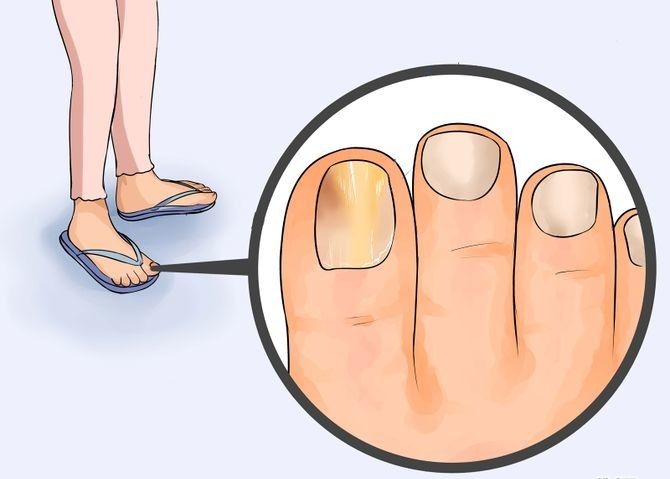 Fingers must be freed from jewelry, squeezing jewelry, including wrists, ankles.
Fingers must be freed from jewelry, squeezing jewelry, including wrists, ankles. - Applying a cold compress. As a cold, products from the freezer, ice, a stream of cold water are suitable. Usually the pain disappears after 4-5 minutes. If the nail has already turned blue, and a hematoma has formed, then the symptomatic manifestations will noticeably subside.
- Antiseptic nail treatment. Chlorhexidine, Iodine, hydrogen peroxide, Furacilin are ideal. Disinfection is also necessary when combined with a bruise of cuts, lacerations.
To prevent rejection of the nail plate, press it with adhesive tape. Such a bandage, although it will not prevent the detachment of the nail, because these are internal processes, however, it will significantly reduce deformations when a new nail grows. In some cases, it is possible to grow the nail to the skin, then it is possible to save your nail.
If swelling and pain persist at the site of the bruise, or if the area becomes reddened or blackened, you should consult a traumatologist or surgeon.
The doctor will assess the severity of the damage, the degree of soft tissue damage, exclude bone fracture and crushing. To eliminate the hematoma and the accumulation of blood, the bruised area is anesthetized, and the nail plate is drilled to drain the accumulated blood.
Treatments
Swelling, soreness, scratches and wounds usually require local remedies available in every first aid kit. To eliminate hematomas, Heparin ointment or Vishnevsky balm is effective. Compresses with novocaine, lidocaine or Dimexide allow you to eliminate pain.
To apply, it is enough to moisten the surface of the skin with a treatment solution, wrap it with cling film and put on a fingertip. 2-3 applications are enough to not only get rid of pain, but also eliminate swelling, bruising, redness, hematomas.
Watch this video on YouTube
What to do at home? Effective in relation to the nail plates are alternative methods of treatment.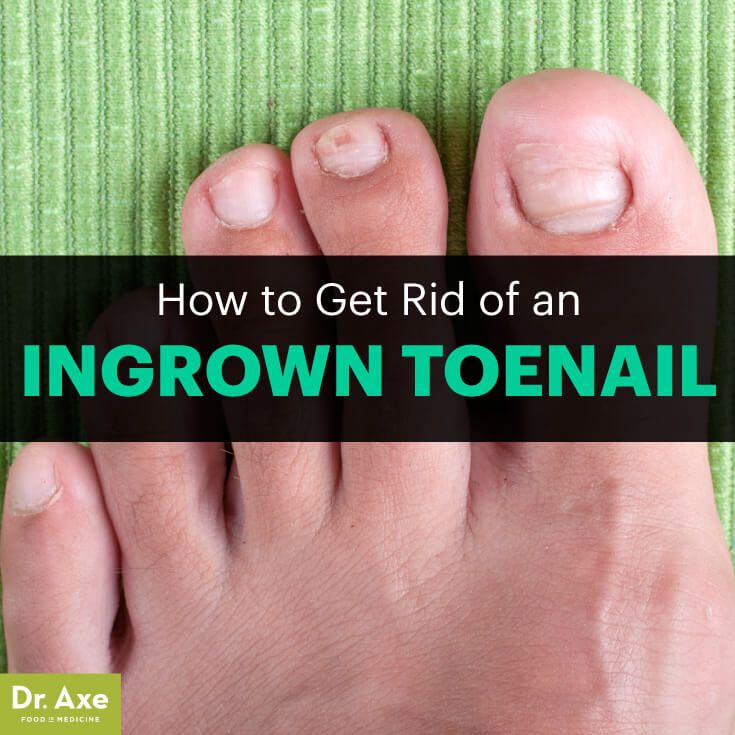 These include the following popular recipes for getting rid of unpleasant symptoms:
These include the following popular recipes for getting rid of unpleasant symptoms:
- Sea salt baths. A warm saline solution improves blood circulation, normalizes the outflow of stagnant blood, eliminates swelling, and soothes the foot or hands. The total duration of the procedure is 15 minutes. To enhance the therapeutic effect, you can add various essential oils.
- Warming compress. A compress based on red wine and vinegar allows you to eliminate pain, restore the integrity of the nail plate. The resulting solution is used overnight. To do this, the bandage, folded in half, is abundantly moistened in the composition and applied to the bruised area. The compress is fixed with a bandage.
- Badyaga. The remedy is effective against deep hematomas, pain. Restores blood circulation, normalizes the function of the subcutaneous layers. For treatment, you can use both gel and powder. If the nail comes off, then with the help of Badyagi you can speed up the process of updating the keratinized tissue.
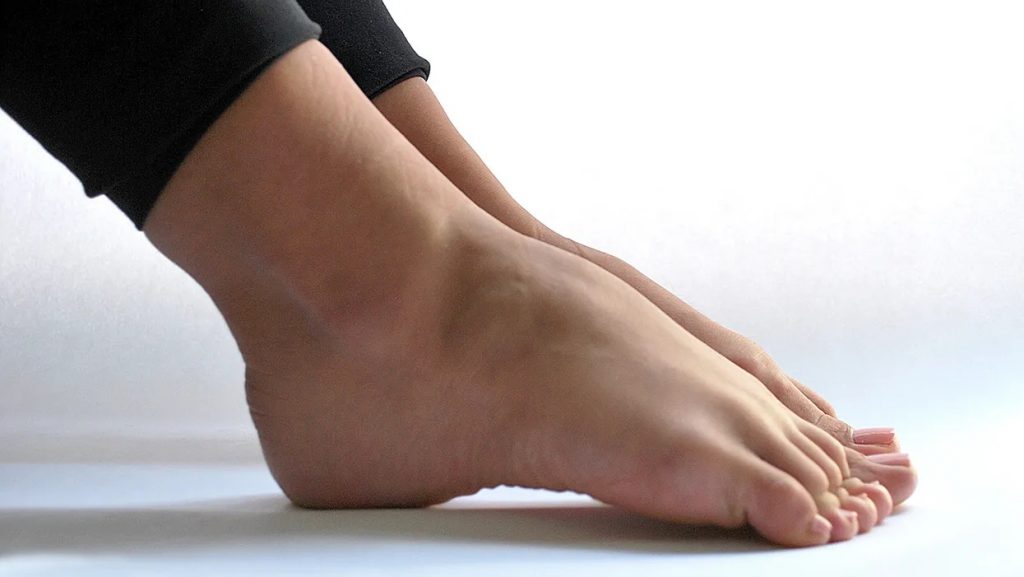
There are compresses made from baked onions, sour milk or kefir. Efficiency largely depends on the timeliness of application after injury. The best therapeutic effect can be achieved with medications and properly provided first aid. In the healing process, speed is important. This will avoid complications such as:
- inflammatory process;
- accession of secondary infections;
- festering;
- rejection and severe deformation of the nail.
The consequences of complications are treated with antibiotic therapy (local or systemic drugs), surgery, special compresses.
If the injury is complicated by fractures or dislocations of the finger, surgical treatment is prescribed with fixation with a splint, plaster overlays. Be sure to contact a specialist.
Recovery
The period of recovery of the nail and subungual plate after injury is completely determined by the severity of the traumatic injury.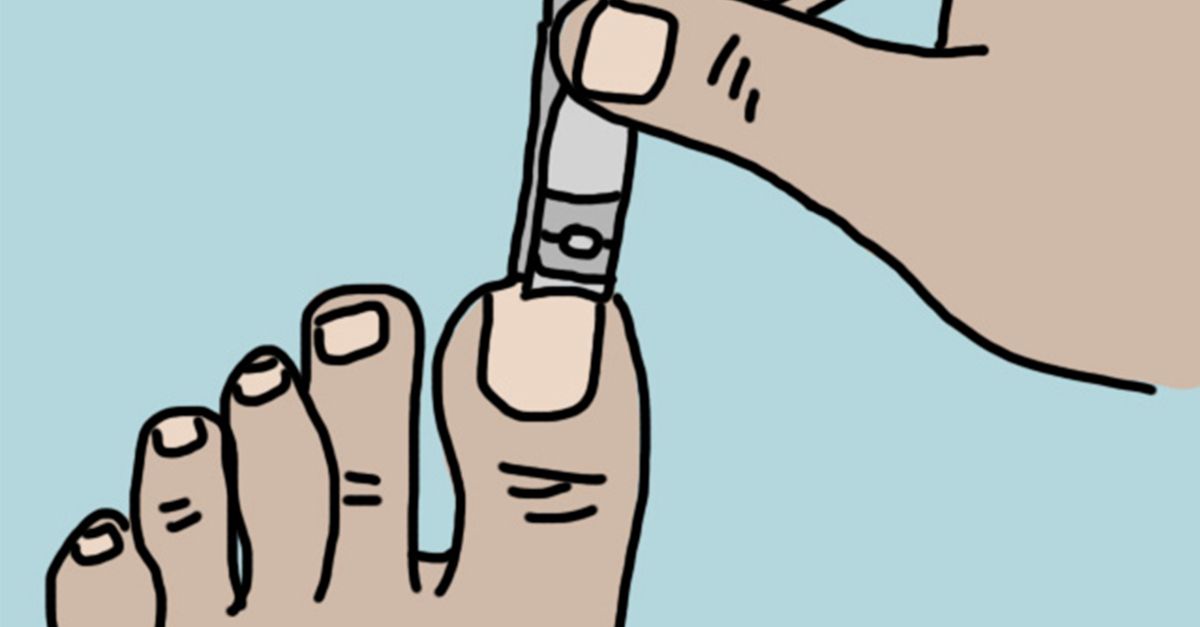 With a mild degree and a slight darkening of the color of the nail, recovery is usually no more than 5 days. With a complicated bruise, the recovery period can take up to 2 months. In case of severe bruises, the duration of the rehabilitation period is also affected by the volume of therapeutic manipulations performed.
With a mild degree and a slight darkening of the color of the nail, recovery is usually no more than 5 days. With a complicated bruise, the recovery period can take up to 2 months. In case of severe bruises, the duration of the rehabilitation period is also affected by the volume of therapeutic manipulations performed.
To enhance the therapy of the nail after a bruise with drugs, physiotherapeutic measures can be prescribed: electrophoresis, heating, various medicinal applications, body wraps. Hardware techniques in modern cosmetology are considered a modern trend.
Women can get a therapeutic manicure, apply a special therapeutic composition to the nail to preserve the beauty of the nail and provide the necessary therapeutic effect.
Watch this video on YouTube
The prognosis for nail bruises is usually favorable, but with timely first aid, it is possible to save the formed nail plate. Aggravated contusion with a fracture requires a larger volume of medical procedures.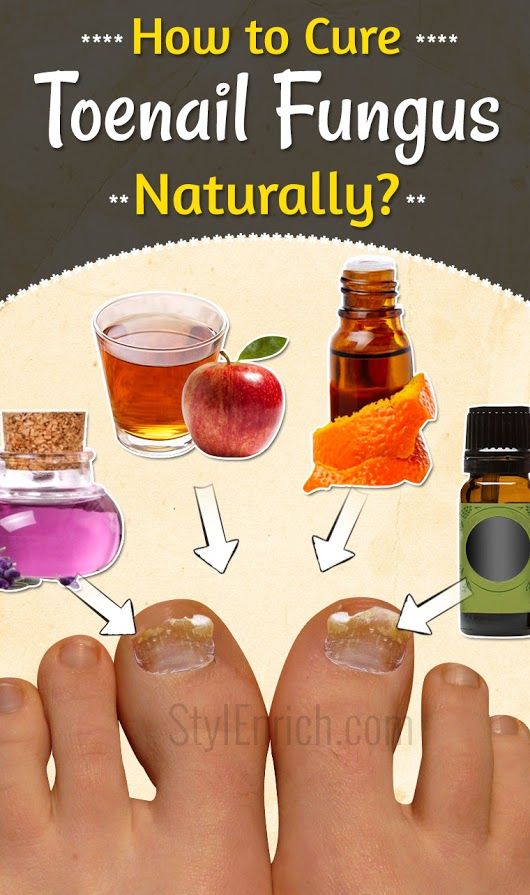
How to treat a black or purple nail with bumps and bruises
Do you have black nail ? An uneven or bruised nail will turn black, like after being hit . This is the same when we accidentally hit some part of the body, and a small bruise appears.
In this article, we will look at what are the best Treatments to cure a black or purple nail, what are the most common symptoms, and what to do if a nail falls off.
Index
- 1 What is the best way to treat purple or black nails?
- 1.1 Treatment of bruised nails without complications
- 1.2 Simple home remedies for uneven nails
- 2 What is a subungual hematoma?
- 3 Causes of purple nails or subungual hematoma
- 4 Purple nail symptoms
- 5 Is it worth diagnosing a bumpy nail?
- 6 What to do if a nail falls off?
- 7 Flesh is growing under my fingernail, is that bad?
- 8 What should I do if my toenail falls off?
- 8.
 1 How to remove a peeling nail?
1 How to remove a peeling nail?
- 8.
- 9 Top Tips for Falling Nails
- 10 Last Tips to Consider
What's the Best Treatment for Purple or Black Nails?
Prevention is the best solution to avoid toenail and handnail problems. Although there is no preventive system as such to avoid the appearance of black nails, the following recommendations should ideally be followed to achieve rapid improvement after we have been injured.
Treatment of nail bruises without complications
Handling a purple nail that has been hit quite often. However, we must differentiate the degree of impact, because sometimes the root can be damaged and its growth will change.
In addition, it can cause internal bleeding, which makes it look rather ugly aesthetically.
This bruise on the nail or bump, also known as subungual hematoma may be painless and does not require treatment. However, the pressure created by the blood accumulated under the black nail, this can be very painful. To avoid pain, your doctor may perform decompression, also called trepanation, to allow blood to drain, relieving pressure and pain in the area.
To avoid pain, your doctor may perform decompression, also called trepanation, to allow blood to drain, relieving pressure and pain in the area.
Source: pinterest
After anesthetizing the affected finger or toe, the physician may use the following decompression techniques to drain the blood:
- Cauterization . This can be done with a medical hot wire or a carbon laser which is used to burn the wound. It usually doesn't hurt and is quick.
- Needle. A large diameter medical needle can also be used to pierce a black nail. During the procedure, the heated tip is cooled by contact with the hematoma, which avoids injury.
After some of these treatments, your nail will be bandaged and your fingers will be bandaged and you may need to use cold compresses for the first 12 hours. If you need to add something, your doctor will need to tell you what to do and how to do it. The only possible complication is that you will get infected.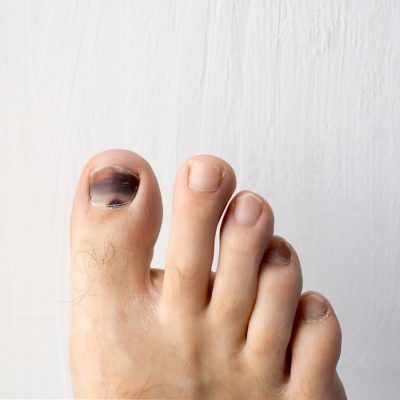
If the blow was too strong and you were seriously injured, in these cases it may be necessary to have a doctor perform stitches. But usually, if the bruise is not very small and the nail is involved, after a few weeks the nail can come off on its own due to the accumulation of blood. A new nail will grow in about 8 weeks if it comes from a hand, if it is a toenail it can take up to 6 months. A neoplasm of the nail may have an abnormal appearance, in no case or in doubt, do not think about it and consult a doctor.
However, you don't have to worry, because if your nail happens, it won't necessarily stay that way for life, as the black or purple color may disappear as the nail grows. If you received a very hard blow to the nail, you should be aware that if the root is damaged, the nail may come off. . In this case, the nail will grow back.
Easy Home Remedies for Uneven Nails
Next, I suggest you a treatment to make your black nail heal quickly and healthy without losing any detail!
- After you hurt your nail, you should dip your broken finger into chamomile tea.
 This infusion should be hot, but not hot enough to burn you. Chamomile is a natural sedative and tranquilizer that will help reduce inflammation and pain from a stroke.
This infusion should be hot, but not hot enough to burn you. Chamomile is a natural sedative and tranquilizer that will help reduce inflammation and pain from a stroke. - Try inserting your finger into a glass of chamomile and exiting it. If you cannot move or bend your finger, you may have a fracture and you should see a doctor as soon as possible.
- You can stick nail in a glass of warm water with lots of salt to reduce inflammation and prevent purple or black nails.
Article subject:
How to cure a nail
Source: podoactiva
What is a subungual hematoma?
On purple or black nails from a lump, bleeding occurs under the nail (hand or toe) and is called subungual hematoma . It is usually caused by crushing and severe stabbing pain as blood pools under the nail.
In the absence of bone fractures or more severe injuries, the presence of such a hematoma should rarely be of concern.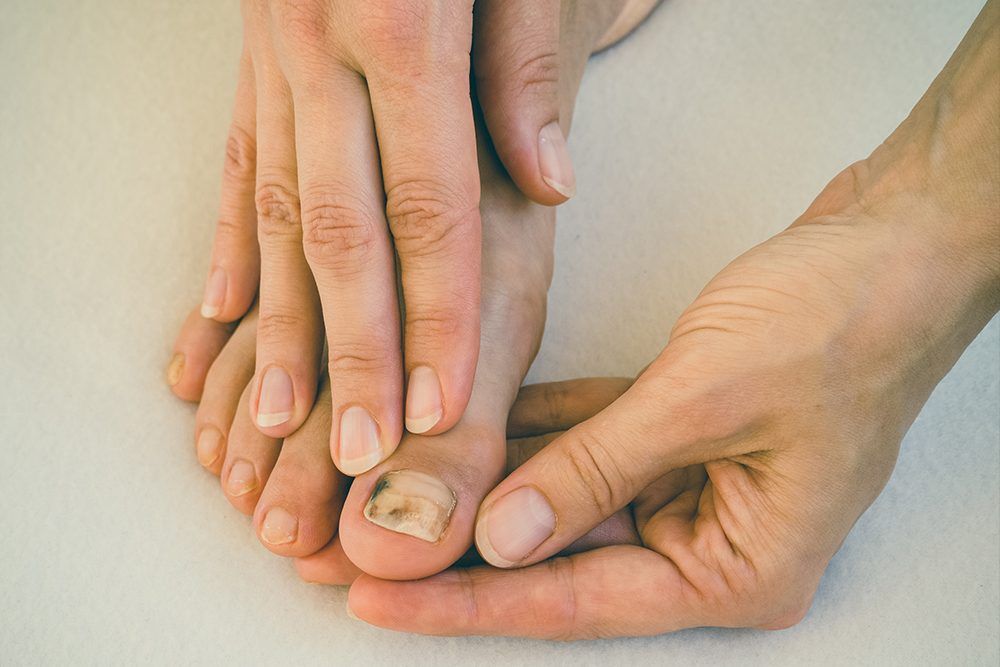
Causes of purple nails or subungual hematoma
Very often, subungual hematoma is the direct result of a finger injury involving the tip of the finger. For example, this may be after hitting a door with a finger, a heavy object, or a hammer. It can also happen after you drop a heavy object, such as a dumbbell, on your toe.
In some cases of injury under the nail will cause dark areas of black or purple, But you have nothing to worry about, although it is always a good idea to go to the doctor to check this and make sure that the root of the nail is not damaged.
Article subject:
Why do nails turn yellow?
Violet nail symptoms
The most common symptom of a bruised nail: severe throbbing pain this is created by the pressure of the blood that collects between the nail and finger. There may also be discoloration that is darker in color than black, such as red, brown, or purple (this may be on part of the nail or completely).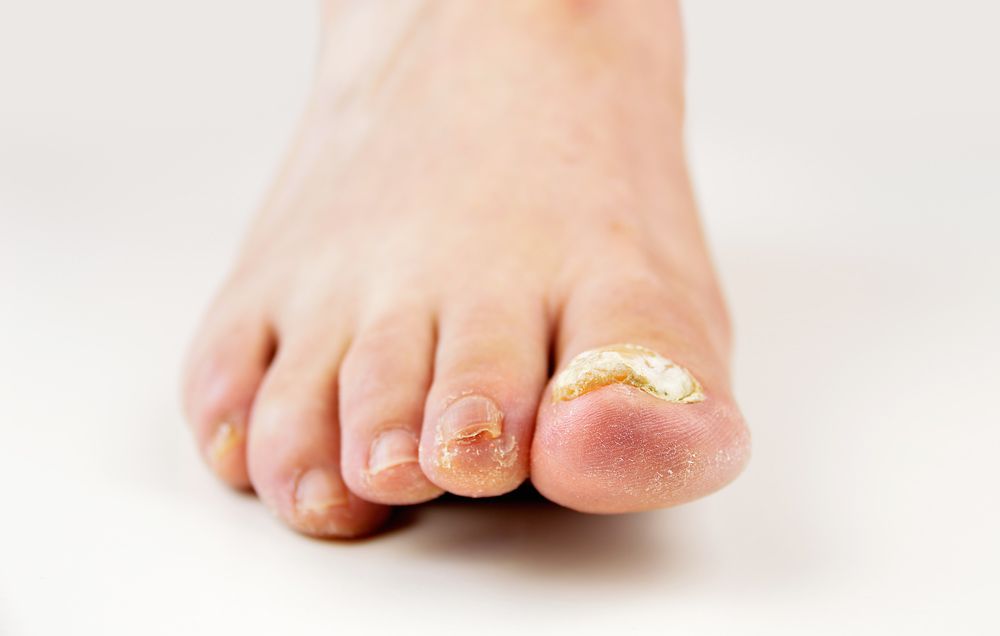
Is it worth diagnosing a nail with a lump?
If you have subungual hematoma and it was caused by a hard blow to either the nail or the foot, you will need to see a doctor as soon as possible so that he can assess the damage you have done to your toe and nail. You need to know if you have fractures or severe tissue damage to your nails or fingers.
The doctor will examine your finger and purple nail. and you may need an x-ray to confirm or rule out a broken bone or other type of injury.
What to do if a nail falls off?
Nails can fall out due to various factors, most commonly due to a very hard blow due to having a nail infection, improper shoes or playing sports for many hours.
Nail loss can happen to both fingernails and toenails, but we don't need to worry, as fingernails grow in two months and toenails in four.
We advise you to see a specialist doctor if you have any abnormalities in the affected finger so that he or she can find the best treatment for you.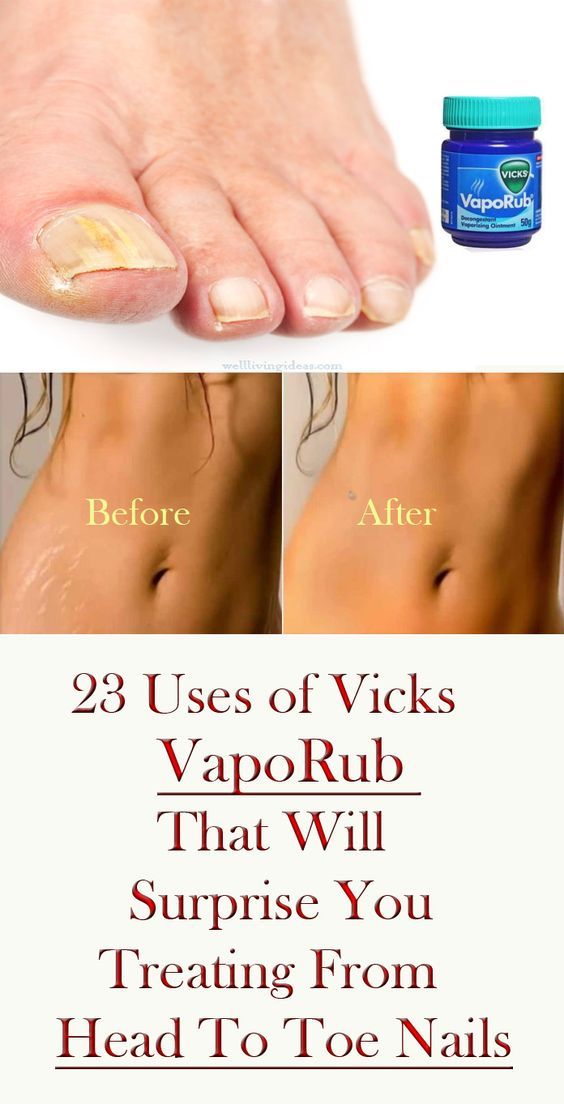
I have flesh growing under my fingernail, is that bad?
If you see flesh growing under the nail it is best to go to a dermatologist . It could just be a benign problem, but it could also be something more serious. Also, if you notice that this nail is blackish in color, it's probably a vein problem.
What should I do if my toenail falls off?
First of all, you need to be patient. We know it's very painful when a nail peels off, but don't worry because it usually heals within a few days. Trim or file the nail, rinse the finger well with saline, and then cover it with adhesive tape.
In any case, you should know that depending on what caused your detachment, you will be advised to see a doctor. And this could be due to a fungal infection, injury, or even certain medications, such as those given to cancer patients. If in doubt, contact a professional.
How to remove a peeling nail?
If the nail has fallen off, wash the finger with serum, then take nail clippers to cut off everything you can . Then take a file to clean up those shorter, stubborn parts. Do this carefully, as it can be annoying and even painful.
Then take a file to clean up those shorter, stubborn parts. Do this carefully, as it can be annoying and even painful.
Best advice if a nail falls off
- First you must clean the area : as soon as the nail falls off, wash the affected area thoroughly with warm water and mild soap.
- Find out the reason : it is important to know the reason why the nail fell off. If it was due to a blow, it does not mean anything serious, although if an infected area is visible, you should see a specialist doctor.
- Maintain a protected area: After your nail has fallen, you must be careful not to rub the area so as not to infect the nail. If it has not fallen completely, it must be cut to avoid more serious pain and injury. You must keep the area dry, and you can apply the bandage without being too tight so as not to cut off circulation.
- Take medicine: You can take medicine to relieve pain, ideally painkillers, although if the pain is due to a fungus, be sure to treat with an antiseptic.








